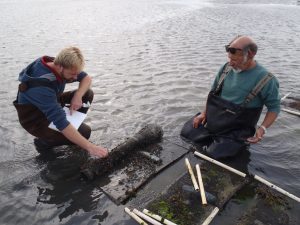NOAA and Sea Grant fund $800,000 in research to understand effects of ocean changes on iconic Northeast marine life
NOAA’s Ocean Acidification Program (OAP) and the Northeast Sea Grant Programs, which includes Woods Hole Sea Grant, joined together to prioritize and fund new research on how ocean acidification is affecting marine life including lobsters, clams, oysters, mussels and sand lance that are so important to the Northeast region. Funding includes $800,000 in federal funds from the two programs with an additional $400,000 non-federal match.
NOAA and Sea Grant drew on the work of the Northeast Coastal Acidification Network to set these priorities. The network is made up of concerned fishermen, scientists, resource managers, and representatives from federal and state agencies who work together to identify critical vulnerabilities in the northeast, including regionally important and economically significant marine resources that are vital to the many livelihoods and the culture of New England.
The complete list of the projects can be found below:
Probing molecular determinants of bivalve resilience to ocean acidification
Flexing mussels: Does Mytilus edulis have the capacity to overcome effects of Ocean Acidification?

